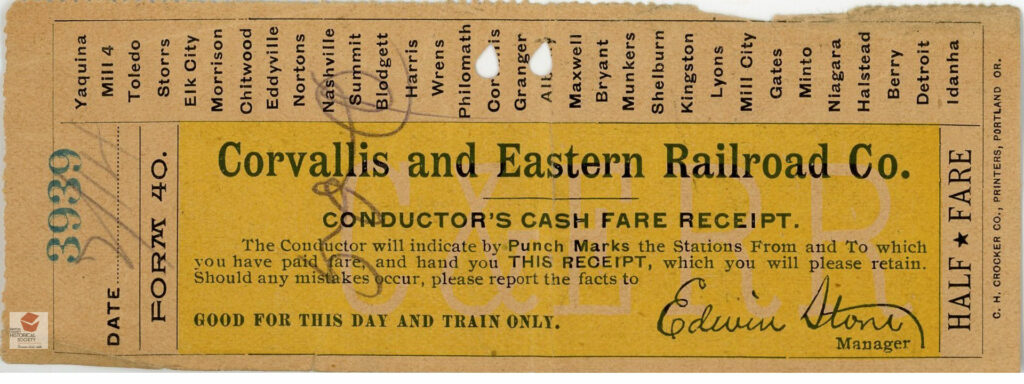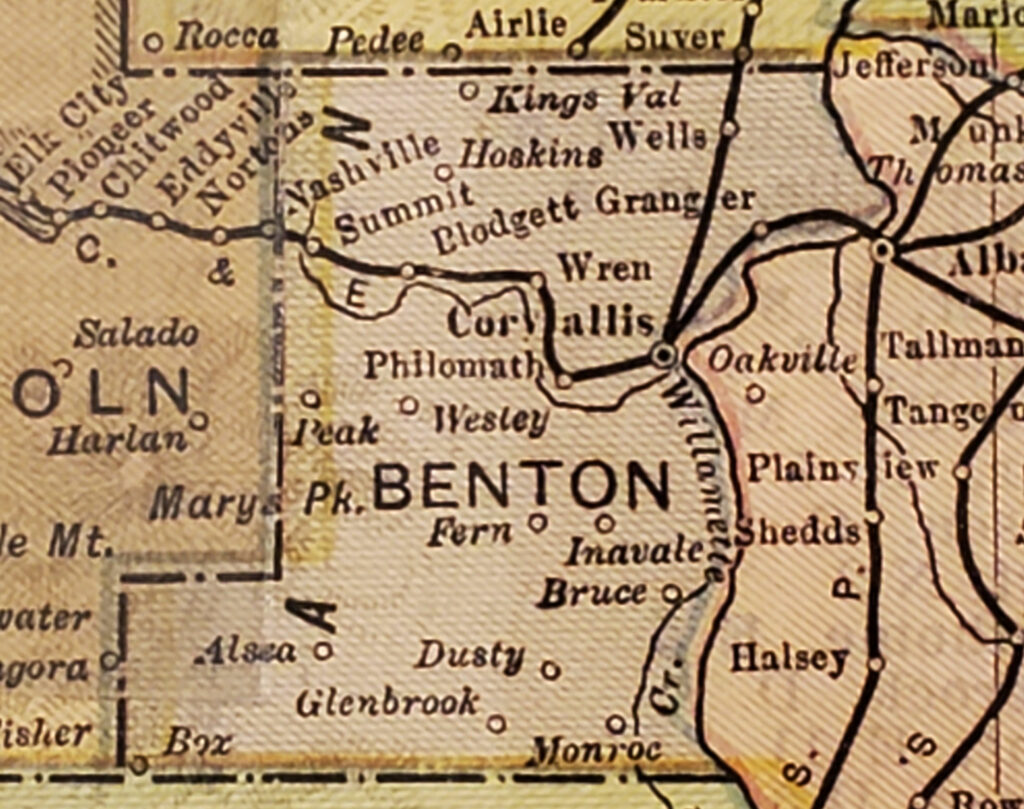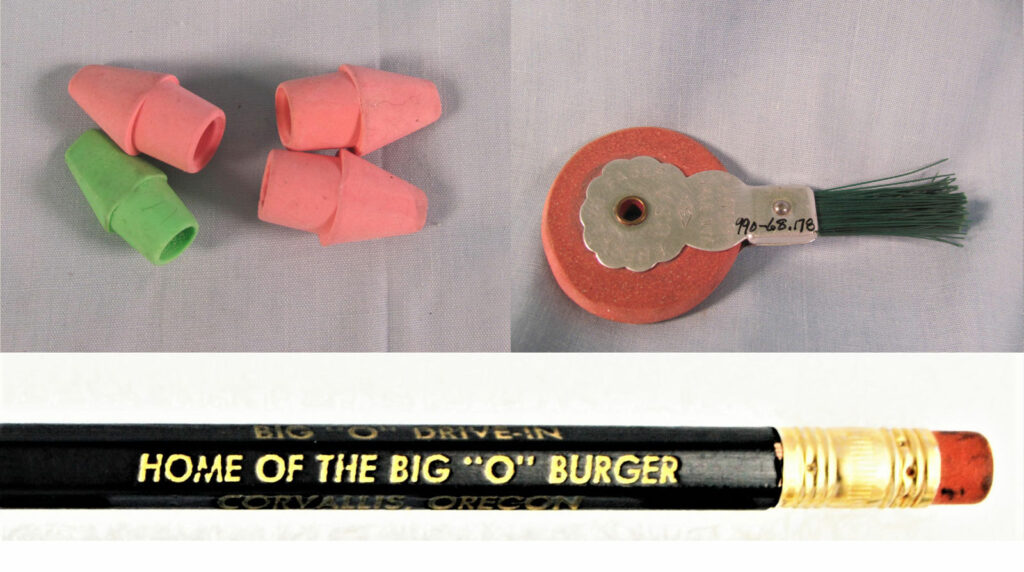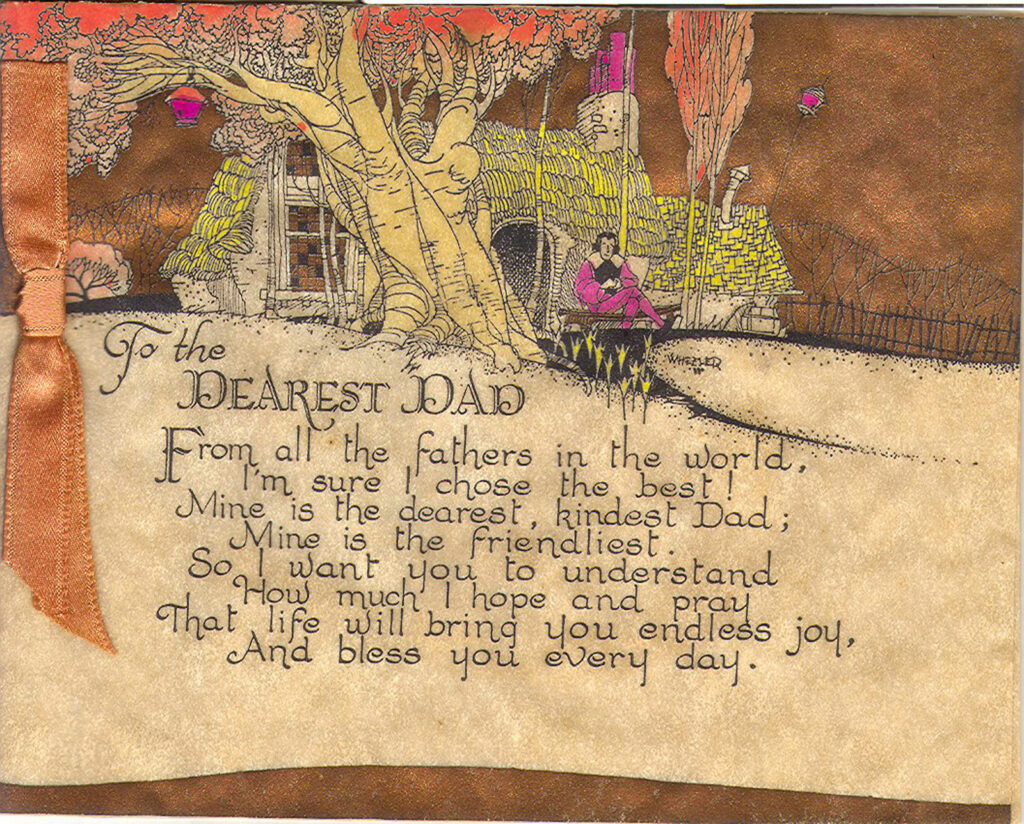In conjunction with Veterans Day, the Corvallis Museum opened a new exhibit which details the military service and later contributions of several Benton County veterans. Benton County Historical Society’s archives also contain the detailed account (The Navy Days) of another Corvallis veteran, Robert (Bob) Richard Rose.

Robert Rose joined the U. S. Navy in 1939 and served as a carpenter’s mate until 1945. In 1941 he was stationed on the USS Nevada. He recounts the events of December:
“The drills at sea were intense, and the hours at general quarters longer and longer. In the last few days at sea, before the weekend of December 6th and 7th, one of our destroyer escorts spotted an enemy sub. The sub was sunk, and we then knew that war was inevitable. Still, it was back to port [Honolulu] for the weekend rest and liberty….
“Sunday morning, December 7th. Was a beautiful sunny morning like most of the mornings in the Islands. I was up early…dressed in my best white liberty uniform, and ready to go on liberty at 0800….I was standing at the after ladder just below the main deck….
“At 0755 the band was playing call to colors, and there was an accompaniment of machine gun firing. This was new to me, and I wondered what was going on up there. I started up the ladder to see. I only got part way up, and met the band coming down, shouting, ‘The Japs are here, the Japs are here!’ I didn’t question this at all, and ran to the carpenter shop to wake the men that were sleeping there. I was telling them to ‘man your battle stations, general quarters, this is the real thing—the Japs are here.’ One young red headed striker from Tennessee stuck his head out a porthole and said, ‘look at those planes dropping water bombs!’ I was telling the crew that this was the real thing. They didn’t believe me, and were very unhappy with the early Sunday morning awakening. Just then the ship’s alarm sounded general quarters….
“In looking back and remembering, now I can see why all the drills were so important. When the general quarters bell rang, it started my adrenaline flowing, especially when you knew I was for real this time. My first duty was to go to the third deck and close all water tight doors and hatches. This is what I had been doing in drill after drill. It was just second nature, you don’t think when you walk or run—do I put my left foot ahead of right?–No, it just happens! This was for real and speed was important. I didn’t even take time to turn on lights, because I would have to turn them off again. I guess we were in some kind of shock or whatever it is that gives a body super human power. Later, when I went back to open some of the doors and hatches, I just couldn’t open them without a wrench which we normally didn’t need.
“It was during this time that I was closing up that I felt the ship jump or shake like an earthquake. It takes something big to move a 29,000 ton battleship. I knew something had happened, but I didn’t know what until later. That was the Arizona explosion. The Arizona was the next battleship just ahead of us in battleship row.
“I returned to my battleship station…Then I was sent forward in our area of the ship to look for damage, as it was reported that we had taken a torpedo.” Rose didn’t find any damage in that area but the later found the ship had been hit in a different area (frame30). He then followed orders to take six men topside to help in getting the ship underway.
“Of course, we were getting all our orders from one man with headphones. We all wanted to know what was going on topside, but they were too busy to tell us anything. This was my opportunity to go up and see just what was happening.
“We found the boatswain’s mate topside, and I released the six-man crew to him. Then I stood around a little to see what was going on. Most of the first attack was over. The deck crew and anyone else they could get, were busy trying to cut the ship loose from the quays…to get underway. They were using axes, knives, machetes or anything else to cut the lines holding the ship. We were able to back away from the Arizona which was in front of us and then head down the channel. This was all done without the help of tugs, which was an unheard of feat. We passed the burning Arizona, and could see all the oil burning on the water around the ship. We had to stay clear of this burning oil.
“As we moved down the channel, I moved to midship on portside to see a little better, and stay out of the way….I looked a little forward, and saw what I thought for a moment was a large sub. I then asked a fellow standing next to me, ‘What’s that sub doing in here?’ He answered, ‘That’s no sub, that’s the U.S.S. Oklahoma upside down—you are looking at the bottom of the ship.’
“I then moved over to the portside…on the main deck just under one of the 5-inch guns. It was being trained out, and I wondered why? I found out as the second raid was starting, and guns began to fire. They fired this 5-inch gun while I was still under the barrel. The explosion knocked out my hearing, and also a Jap plane that was headed for us. I was not able to hear for some time, and that is why I have had a hearing problem the rest of my life.
“I realized that I didn’t belong on topside, and I would feel a lot safer below the 14” armored deck and at my repair station. The Jap planes were coming back. They saw the Nevada in the channel and were trying to sink us there. I started through the laundry to find a ladder to go down but the laundry was on fire from a bomb hit. I then went forward to the crews recreation compartment and was about half-way through there when a bomb exploded on the deck above me. That was on the galley deck, and it was because of the ceramic tile that it didn’t come on through to where I was walking. The explosion did help me along, as it sent me through the hatch towards which I was headed. It was lucky that I didn’t hit a bulkhead, or I would have been splashed all over it.
“I then turned to go down the ladder—we always walked down a ladder just like stairs in a house—and as I put my foot out for the first step there was another bomb someplace nearby. With the help of this bomb, it was just one big step, and I was down on the second deck.. I stood there thinking how lucky I was to be alive at this moment.”
Robert Rose not only survived then but also the rest of World War II. After the war, he resided in Corvallis, working as a carpenter, a draftsman for CH2M Hill, and manager for FloMatcher before founding R3 Engraving in 1962. He ran that company until selling it before retiring in 1978. He founded and held various offices in the Willamette Valley Chapter of the Pearl Harbor Survivors Association. He was also active as a Sea Scout and Boy Scout leader and in Kiwanis. He died in 2005.



